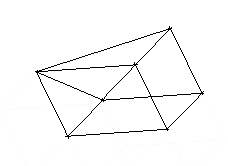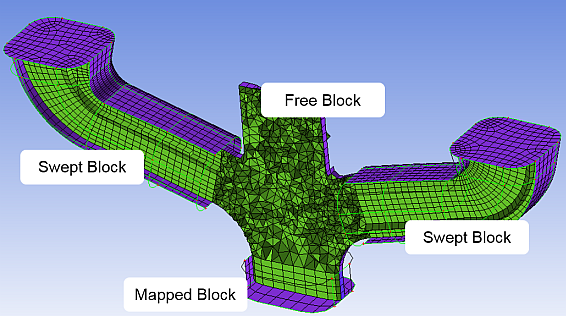A description of Mapped, Swept and Free block types is shown in Figure 26: Hexa Block Types.
Mapped blocks are required to have an equal number of nodes on parallel edges. In 3D blocking, this will result in hexahedral cells; quadrilateral cells in 2D blocking.
Free blocks may have different numbers of nodes on opposite sides, resulting in non-hexa (quad if 2D) cells.
Swept blocks are identified by having two free faces opposite each other; and mapped faces on the perpendicular sides between.
When blocking a model, it is important to note that the block type affects many operations within Hexa and the entire approach to mesh generation. For example, if you split a model having mapped blocks, the split will propagate through faces that have a mapped relationship to the opposite side. For free blocks, a split will terminate at the free face. Similarly, if you set edge parameters on a mapped face edge, opposite edges will necessarily have the same number of nodes. If however, that edge is attached to a free face, the number of nodes on the opposite side will not be adjusted. Using this free/mapped relationship, you can shape the blocking and resulting mesh.
Some operations may result in a degenerate block - a 7-sided mapped block. Degenerate blocks have special behavior for mapped blocking and are not allowed in swept or free blocking.
The ability to Convert Block Type from free to mapped or vice versa imposes constraints on the blocking and resulting mesh. By imposing more constraints, you can enforce a greater number of hexa elements, while reducing the constraints can sometimes improve mesh transitioning.





